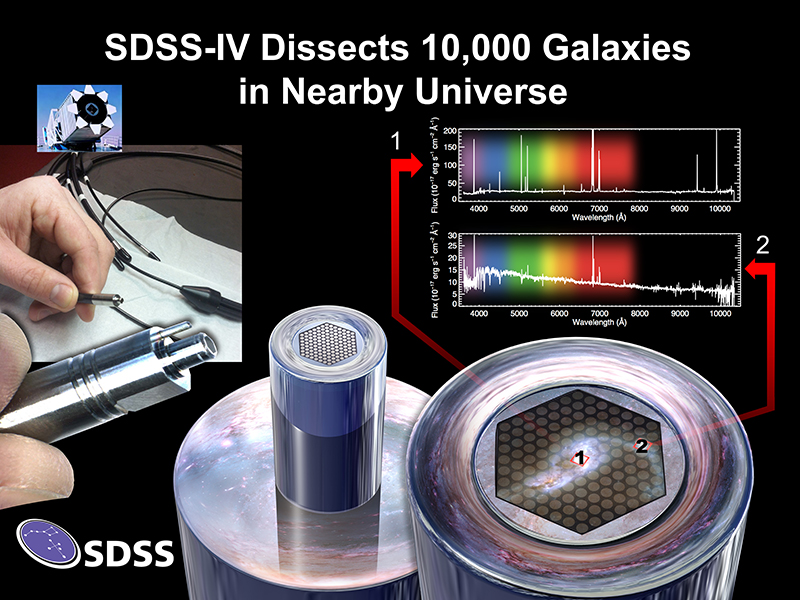This post was written by Anne-Marie Weijmans, the SDSS Data Release Coordinator.
It’s the last day in July, and that means that it’s time again for a Sloan Digital Sky Survey (SDSS) data release! This year, we are very happy to announce our fourteenth public data release, DR14.
Making data publicly available is an important aspect of SDSS, as it allows SDSS data to be used world-wide by anyone with an internet connection. For more than a decade, SDSS data has been used by astronomers for their science, by teachers in their classrooms[1], by students for their school projects, and by the general public to learn more about the Universe. In order to have this broad impact, we work hard to not only make our data available, but to also ensure that it is accessible. All our data is thoroughly documented, and we have various tools, tutorials and examples to assist anyone interested in using our data — from professional astronomers to high school students. Just go to the SDSS data access website to find out how you can work with the SDSS data!

All the SDSS data are stored at the servers of the Center for High Performance Computing (CHPC), at the University of Utah. This particular server holds all the SDSS data releases, including DR14. Just DR14 alone is already a whopping 156 TeraBytes (TB = 1000 Gigabyte = 1012 bytes): that is more than 33,800 DVDs worth of data! Image credit: Adam Bolton
So, what is available in DR14?
- APOGEE-2, or the APO Galaxy Evolution Experiment-2 is very proud to announce its first public data release! APOGEE-2 studies the structure of the Milky Way by taking infra-red spectra of stars, to learn more about how the Milky Way formed and evolved over time. You can explore these spectra using our webapp and find stellar parameters and chemical properties in the APOGEE-2 data release.
- eBOSS, short for extended Baryon Oscillation Spectroscopic Survey, is also celebrating its first public data release! eBOSS is mapping the structure of the Universe, by taking optical spectra of distant galaxies and quasars. These spectra provide distance measurements to galaxies, quasars, and intervening gas, all of which enable eBOSS to make a 3D map of the Universe, and learn more about how galaxies cluster in space. Ultimately, eBOSS aims to precisely measure the expansion rate of the Universe, and reveal more about the nature of the mysterious Dark Energy that accelerates this expansion. The eBOSS spectra are also available in our webapp.
- MaNGA or Mapping Nearby Galaxies at Apache Point Observatory already released its first data last year, but they’re back with even more data cubes, 2,812 in total! MaNGA uses integral-field spectroscopy to map the properties of galaxies, and find out more about how different galaxies form and evolve. The MaNGA team has prepared a very handy set of tutorials to explain the data cube format, so that anyone can make use of the wealth of information hidden in these galaxy integral-field spectra.
Finally, we’re also very excited to share our new Image Policy with you! We have updated our image license to a Creative Commons Attribution license (CC-BY), which means that any image on our website may now be downloaded, linked to, or otherwise used for any purpose, provided that the image credits are given.
We hope you’ll have fun with all the spectra, catalogs, and tools included in our Fourteenth Data Release, and that they will help you with your science, outreach, teaching, school projects, and anything else!
Anne-Marie Weijmans
SDSS Data Release Coordinator
University of St Andrews
[1] If you are a teacher, we invite you to check out our latest educational guides and activities at SDSS Voyages! We are also developing a Spanish version, available here.














